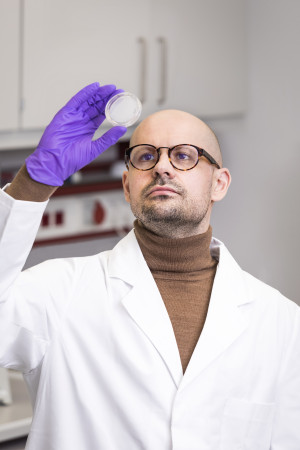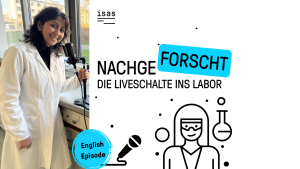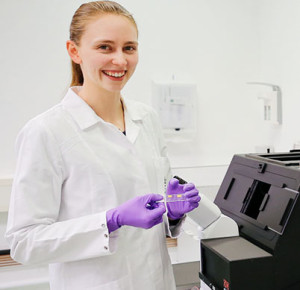Dortmund, 2nd May 2024
Long before life began, there was hydrogen sulfide (H2S). Belched out by the countless volcanoes that dotted Earth’s primordial surface, the foul-smelling gas saturated the atmosphere and dissolved into the oceans. There, it formed one of the building blocks for the biomolecules that later became living organisms. And although considered highly toxic when inhaled, recent research shows that H2S still plays many vital roles in our cells. A team of ISAS scientists that is pioneering some of the research into how H2S helps our bodies function recently discovered that H2S plays a vital role in ensuring a level supply of oxygen in the blood.
On a mundane level, we know hydrogen sulfide as the stench that rises from sewage and rotting marshes. But in our body, H2S serves an important purpose. It is part of a group of gaseous molecules, called gasotransmitters, that can transmit signals within and between cells. “What we are seeing is that all the small molecules that existed in the primordial soup at the beginning of life remain embedded into our cells,” says Dr. habil. Miloš Filipović, leader of the ISAS research group ERC-Sulfaging (an amalgamation of the words, sulfur and ageing, which designate the focal points of the group’s work that has been funded by a European Research Council grant). Even more notable: H2S seems so vital in the functioning of the body that “every cell produces its own sulfide.”.
Could H2S help regulate hypoxia?
Yet even Filipović was surprised when he discovered how uniquely some important cellular mechanisms rely on H2S. Specifically, Filipović and collaborators at the University of Chicago, Illinois, recently studied the role of H2S in the activation of the carotid body, a small cluster of cells that sits near where the carotid arteries branch off in the neck.
The carotid body’s primary function is to monitor how much oxygen and carbon dioxide is dissolved in the blood at any given moment. Our bodies need oxygen to function but certain factors can make its supply dip, ranging from lung and heart diseases to common disorders such as sleep apnea, in which a sleeper intermittently stops breathing.
When the carotid body senses such a decrease in blood oxygen, called hypoxia, it sends signals to the brainstem, which, in turn, activates a process that makes our heart pump stronger and our lungs work harder to breathe. “This is why people who go through episodes of sleep apnea start to breathe again,” says Filipović. “It’s a sort of survival mechanism.”

Dr. habil. Miloš Filipovićs leads the ISAS research group ERC-Sulfaging.
© ISAS
Persulfidation as a natural oxygen sensor
Previous studies suggested, that H2S plays an important role as a mediator of this process. However, the underlying signaling mechanisms had been unclear. Until now: In their study, Filipović and his collaborators used a powerful analytical technique called MS/MS analysis or tandem mass spectrometry to study the protein Olfr78 which belongs to the olfactory receptor family, but plays a crucial role in the carotid body in detecting oxygen.
In MS/MS analysis, a mass spectrometer selects an ion of interest, then fragments it into smaller pieces that are analyzed to provide information about the molecular structure of the original particle. When the researchers applied the technique to Olfr78, they saw that the relative lack of oxygen in the blood allows a higher-than-normal number of hydrogen sulfide molecules in the cell to bind themselves to Olfr78, a process called persulfidation. In this case, persulfidation becomes possible because the sulfide occupies the “slots” that would normally be taken up by oxygen molecules. As the number of persulfidated Olfr78 molecules in the cells rise, it triggers a cascade of biochemical processes that ultimately up-regulate our heartbeat and breathing. In other words: H2S provides the crucial signal that spurs the carotid body into action. The study breaking down this process in detail, was published in the journal Science Advances in July 2023.
Article Recommendation
Peng, Y.-J., Nanduri, J., Wang, N., Kumar, G. K., Bindokas, V., Paul, B. D., Chen, X., Fox, A. P., Vignane, T., Filipović, M. R., Prabhakar, N. R.
(2023). Hypoxia sensing requires H2S-dependent persulfidation of olfactory receptor 78. Science Advances, eadf3026. https://doi.org/10.1126/sciadv.adf3026.
A versatile protection mechanism for cell proteins
Other research by Filipović already suggests that a similar process involving hydrogen sulfide and oxygen might also help the body fight off aging. Because as essential as oxygen is for the body – dealing with this chemical also exposes cells to highly reactive versions of oxygen molecules called oxygen radicals. This oxidative stress can damage proteins and other vital cell components.
Persulfidation makes proteins more resistant to such damage. Filipović and his group have discovered that hydrogen sulfide binds itself to reactive oxygen molecules that have attached themselves to proteins. This results in a sulfide-oxygen compound which can then get biochemically cleaved off, restoring the protein to its undamaged form.
This “protective loop” is particularly important for proteins that contain the amino acid cysteine, “since cysteine is the most sensitive” to oxygen-induced damage, says Filipović. “We think that this is linked to anti-aging effects that could result in a longer, healthier life.”
How could H2S help intervene with ageing?
Unfortunately, as we grow older, our bodies become less adept at producing hydrogen sulfide, making our cells more vulnerable to damage. Diminished persulfidation has been associated with age-related diseases ranging from cardiovascular problems to cancer to neurodegenerative decline. “We are trying to understand how this is happening. And is there a way that we can intervene?” says Filipović.
Recently, his group started looking into a specific compound produced by a plant or fungus. The so-called phytochemical releases H2S as it becomes metabolized in the body. Together with cooperating partners at the University of Belgrade, Cambridge University and Heidelberg University, the scientists started to feed the substance to worms and rodents, expecting that this might lead to “some mild effects.” However, initial results seem to be promising. The worms – Filipović works with the model organism C. elegans which usually dies after 20 days – started living longer. First attempts with rodents, appeared very promising as aging mice and rats that had consumed the compound experienced a noticeable boost in energy.
More work needs to be done before Filipović and collaborators are ready to release further details. But already, some of his team members have started adding the compound to their own diets. “It’s a compound that is already commercially available and used in human applications,” he says. Filipović expects interest in H2S to stay strong. “Our biannual international meeting for hydrogen sulfide now attracts 150 to 200 scientists. That’s just for this very specialized molecule.”
ANOTHER SURPRISING WAY IN WHICH H2S PROTECTS CELLS
Recently Filipović discovered yet another way in which H2S seems to protect cell proteins: by subtly changing their biophysical properties. As proteins crowd together in the highly confined environment of the cell, they often “melt” into a different state in which they are essentially liquid, says the biochemist. “You’ll see something that looks like a lipid droplet except that it's a protein droplet.” This “melting” allows proteins to nestle together more closely but also makes them vulnerable to becoming misfolded and forming aggregates, which can lead to “all sorts of problems,” says Filipović. In the brain, for example, amyloid aggregates have been associated with Alzheimer’s Disease and other neurodegenerative degeneration. Hydrogen sulfide seems to guard against this by preventing proteins in the droplet state from collapsing completely and aggregating, says Filipović. “This was unexpected.”
Sulfaging has received funding from the European Research Council (ERC) under the European Union’s Horizon 2020 research and innovation programme (grant agreement No. 864921).








